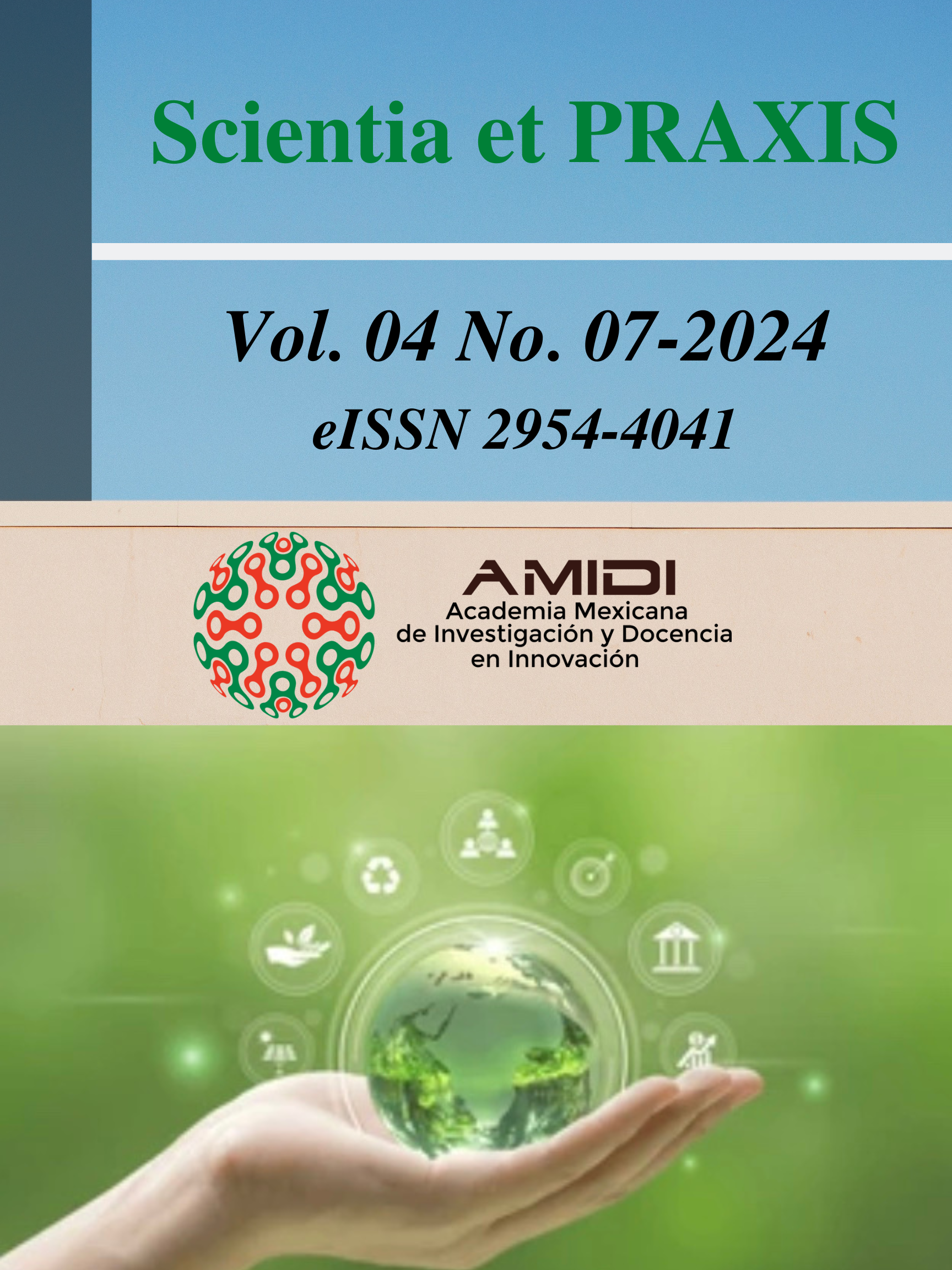“Need and opportunity” as motivations for female entrepreneurship in Latin America
DOI:
https://doi.org/10.55965/setp.4.07.a2Keywords:
entrepreneur, female entrepreneurship, wage gap, unemployment, motivationsAbstract
Context. Entrepreneurship is an intrinsic action for men and women; however, the path women must take differs significantly for various reasons.
Problem. Despite the upward trend in the presence of women in the business field, significant social, cultural, and financial limitations persist, influencing the pursuit of social equality.
Purpose. To identify motivations leading Latin American women, particularly Mexicans, to start their businesses, conducting an analysis of social and economic conditions of women, addressing aspects such as wage disparity, and discrimination in related aspects.
Methodology. A mixed methodology, that includes a literature review accompanied with descriptive and inferential statistical analyses is employed. Through a literature review and a selection of statistical data, the topic of female entrepreneurship in Latin America is analyzed. Sources such as the Economic Commission for Latin America and the Caribbean (ECLAC), Global Entrepreneurship Monitor (GEM), Statista, and the National Institute of Statistics and Geography (for its acronym in Spanish INEGI) reports were consulted, along with academic contributions by different authors.
Findings. Revealing data are presented regarding the existing gaps between women and men in terms of aspects such as high-level managerial position occupancy and employment rate. This data demonstrates through a t-student analysis that in a 5-year time-lapse, from 2018 to 2023, the salary gap hasn’t significantly decreased, and this turns into one of the main entrepreneurial motivations for women.
Originality from a transdisciplinary and sustainable innovation point of view. There is a scarcity of research within the field of female entrepreneurship in Latin America focusing on examining individual motivations. This approach can contribute to the design public or institutional policies aimed at promoting female entrepreneurship.
Conclusions and limitations. The literature review supports the notion that female entrepreneurship arises more out of necessity than opportunity. This study relies on analyzing information from various sources, which poses a limitation when attempting to analyze a specific variable. Therefore, to comprehend a phenomenon like explaining the differences in motives for entrepreneurship between genders, it would be necessary to obtain specific data, requiring an in-depth study.
Downloads
References
Acs, Z. J., Arenius, P., Hay, M., y Minniti, M. (2004). Global Entrepreneurship Monitor. London: London Business School.
Acs, Z. J., Audretsch, D. B., y Lehmann, E. E. (2009). The knowledge spillover theory of entrepreneurship. Small Business Economics, 15-30. DOI: https://doi.org/10.1007/s11187-007-9072-3 DOI: https://doi.org/10.1007/s11187-008-9157-3
Allen, I. (2008). 2007 Report on Women and Entrepreneurship. Global Entrepreneurship Monitor (GEM), The Center for Women Leadership, Babson College, Global Entrepreneurship Research Association (GERA). http://www.gemconsortium.org/
Campos, A. y Lara J.R. (2023). Individualismo y colectivismo como predictores de la intención emprendedora en estudiantes universitarios. Scientia et PRAXIS, 3(5), 1. https://doi.org/10.55965/setp.3.05.a3 DOI: https://doi.org/10.55965/setp.3.05.a3
Carter, N., y Allen, K. (1997). Size determinants of women-owned businesses: choice or barriers to resources? Entrepreneurship & Regional Development, 211-220. DOI: https://doi.org/10.1080/08985629700000012 DOI: https://doi.org/10.1080/08985629700000012
Clancy, S. (2007). ¿Por qué no hay más mujeres en la cima de la escala corporativa: debido a estereotipos, a diferencias biológicas o a escogencias personales? Academia Revista Latinoamericana de Administración, 38, 1-8. https://www.redalyc.org/pdf/716/71603802.pdf
Cromie, S. (1987). Motivations of Aspiring Male and Female Entrepreneurs. Journal of Occupational Behaviour, 251-261. https://doi.org/10.1002/job.4030080306 DOI: https://doi.org/10.1002/job.4030080306
García, A. K. (2021). Solo en los primeros seis meses del 2020 fueron asesinadas 1,844 mujeres en México: INEGI El Economista.
García, A. (2022). Las mujeres dan mejores resultados que los hombres al frente de los negocios y empresas Business Insider México. https://businessinsider.mx/datos-no-opiniones-las-mujeres-dan-mejores-resultados-que-los-hombres-al-frente-de-los-negocios-y-empresas/
García, J. S. R. (2022). Implicaciones de la investigación sobre el emprendimiento social en tiempos de la COVID-19: un enfoque desde la gestión negocios. Scientia et PRAXIS, 2(4), 2
https://doi.org/10.55965/setp.2.04.a3 DOI: https://doi.org/10.55965/setp.2.04.a3
Garriga, J. (2019). Solo hay 6 países en el mundo en el que las mujeres tienen exactamente los mismos derechos que los hombres. La Vanguardia. https://www.lavanguardia.com/cribeo/estilo-de-vida/20190301/47433315918/solo-hay-6-paises-en-el-mundo-en-el-que-las-mujeres-tienen-exactamente-los-mismos-derechos-que-los-hombres.html
Gilbert, A. (2021). Los feminicidios, la otra pandemia de América Latina. El Periódico. https://www.elperiodico.com/es/internacional/20210308/8m-encuentra-america-latina-medio-11565151
Global Entrepreneurship Monitor (GEM, 2020). Global Entrepreneurship Monitor 2019/2020 Global Report:. London: GEM.. https://www.gemconsortium.org/report/gem-2019-2020-global-report
Global Entrepreneurship Monitor (GEM, 2022). Global Entrepreneurship Monitor 2021/2022
Global Report: Opportunity Amid Disruption. London: GEM. https://www.gemconsortium.org/report/gem-20212022-global-report-opportunity-amid-disruption
Gobierno de México (GOBMEX, 2018). Brecha salarial, una de las grandes barreras para la igualdad de género. Gobierno de México/Comisión Nacional para Prevenir y Erradicar la Violencia Contra las Mujeres. https://www.gob.mx/conavim/articulos/brecha-salarial-una-de-las-grandes-barreras-para-la-igualdad-de-genero?idiom=es
Grossoni, M. (2019) ¿Por qué son mejores las mujeres CEO que los hombres CEO? LinkedIn. https://es.linkedin.com/pulse/por-qu%C3%A9-son-mejores-las-mujeres-ceo-que-los-hombres-m%C3%B3nica-grossoni
Guzmán Cuevas, J., y Rodríguez Gutiérrez, M. (2008). Comportamiento de las mujeres empresarias: una visión global. Revista de Economía Mundial, 381-392. https://www.redalyc.org/pdf/866/86601830.pdf .
Harris, C., Morrison, R., Ho, M. y Lewis, K. (2008, December). Mumpreneurs: mothers in the business of babies. In 22nd Annual Australian and New Zealand Academy of Management Conference (ANZAM) (pp. 2-5). https://www.anzam.org/wp-content/uploads/pdf-manager/1295_HARRIS_CANDICE-86.PDF
Heller, L. (enero de 2010). Mujeres emprendedoras en América Latina y el Caribe: realidades, obstáculos y desafíos. Naciones Unidas, CEPAL, División de asuntos de Género. https://www.cepal.org/es/publicaciones/5818-mujeres-emprendedoras-america-latina-caribe-realidades-obstaculos-desafios
Hernández, L. (2020). Sólo el 8% de CEOs de México son Mujeres. El Financiero. https://www.elfinanciero.com.mx/economia/solo-el-8-de-ceos-en-mexico-son-mujeres
Hossain, A., Naser, K., Zaman, A., y Nuseibeh, R. (2009). Factors influencing women business development in the developing countries: Evidence from Bangladesh. International Journal of Organizational Analysis, 17(3), 202-224. https://doi.org/10.1108/19348830910962361 DOI: https://doi.org/10.1108/19348830910974923
Instituto Nacional de Estadística y Geografía (INEGI, 2019). Mujeres y hombres en México 2019.Instituto Nacional de Estadística y Geografía. México. https://www.inegi.org.mx/contenido/productos/prod_serv/contenidos/espanol/bvinegi/productos/nueva_estruc/702825189990.pdf
Instituto Nacional de las Mujeres (INMUJERES, 2007). El impacto de los estereotipos y los roles de género en México. http://cedoc.inmujeres.gob.mx/documentos_download/100893.pdf
Jamali, D. (2009). Constraints and opportunities facing women entrepreneurs in developing countries: A relational perspective. Gender in Management, 232-251. DOI: https://doi.org/10.1108/17542410910961532 DOI: https://doi.org/10.1108/17542410910961532
Jaramillo Pinzón, N. C. (2023). Mujeres y emprendimientos: principales avances en el marco de la Alianza del Pacífico. https://hdl.handle.net/20.500.12494/51995
Lambing, P., y Kuehl, C. (1998). Empresarios Pequeños y Medianos. México: Prentice Hall, ISBN: 9701701372, 9789701701379.
Loscocco, K. A., y Robinson, J. (1991). Barriers to women's small-business success in the United States. Gender & Society, 5-4,511-532. http://www.jstor.org/stable/190098 DOI: https://doi.org/10.1177/089124391005004005
Martínez, D. (2022). Feminicidios: Hay 80 víctimas cada mes. El Heraldo de México. https://heraldodemexico.com.mx/nacional/2020/10/22/feminicidios-hay-80-victimas-cada-mes-217552.html
McClelland, E., & Swail, J. (2005). Following the Pathway of Female Entrepreneurs: A Six-Country Investigation. International Journal of Entrepreneurial Behaviour & Research, 84-107. DOI: https://doi.org/10.1108/13552550510590527 DOI: https://doi.org/10.1108/13552550510590527
McKinsey & Company, (2022). Women matter Mexico 2022. Luces y sombras de la pandemia. https://www.mckinsey.com/featured-insights/destacados/women-matter-mexico-2022-luces-y-sombras-de-la-pandemia/es
Ndemo, B., y Maina, F. W. (2007). Women entrepreneurs and strategic decision making. Management Decision, 118-130. DOI: https://doi.org/10.1108/00251740710719006 DOI: https://doi.org/10.1108/00251740710719006
Nel, P., Maritz, A., & Thongpravati, O. (2010). Motherhood and entrepreneurship: The Mumpreneur phenomenon. International Journal of Organizational Innovation, 3-1.6,34. https://www.researchgate.net/publication/284816368_Motherhood_and_entrepreneurship_The_Mumpreneur_phenomenon
Padian, K y Jesurajan, A. A. (2011). An empirical investigation on the factors determining the
success and problems faced by women entrepreneurs in Tiruchirapalli district - Tamilnadu. Interdisciplinary Journal of Contemporary Research in Business, 914-922. https://www.academia.edu/3175094/an_empirical_investigation_on_the_factors_determining_the_success_and_problems_faced_by_women_entrepreneurs_in_tiruchirapalli_district_tamilnadu
Pascuali, M. (7 de marzo de 2024). ¿En qué países hay más mujeres que se dedican a emprender? Statista. https://es.statista.com/grafico/19263/paises-con-mas-mujeres-
Rodríguez, M. J., y Santos, F. J. (2008). La actividad emprendedora de las mujeres y el proceso de creación de. ICE. Revista de Economía,1(841).
https://revistasice.com/index.php/ICE/article/view/1132
Ruiz-Rosa, I., Gutiérrez-Taño, D. y García-Rodríguez, F. J. (2020). Social Entrepreneurial Intention and the Impact of COVID-19 Pandemic: A Structural Model. Sustainability, 12(17), 6970. https://doi.org/10.3390/su12176970 DOI: https://doi.org/10.3390/su12176970
Statista (2023). América Latina & Caribe: razones para emprender según mujeres por área 2019.Statista. https://es.statista.com/estadisticas/1209761/motivacion-mujeres-emprendedoras-america-latina/
Velasco, C. (2023). La violencia de género adolescente aumenta un 87.2% en los últimos cuatro años. Antena 3. https://www.antena3.com/noticias/sociedad/violencia-genero-adolescente-aumenta-872-ultimos-cuatroanos_2023112565618e4d533bd20001f12634.html.
World Economic Forum (WEF, 2021). Global Gender Gap Report 2021. World Economic Forum. https://www.weforum.org/publications/global-gender-gap-report-2021/in-full/
World Economic Forum (WEF, 2023). Global Gender Gap Report 2023. World Economic Forum. https://www.weforum.org/publications/global-gender-gap-report-2023/
Yordanova, D. I. (2011). The effects of gender on entrepreneurship in Bulgaria: An empirical study. International Journal of Management, 289-305.
Published
How to Cite
Issue
Section
License
Copyright (c) 2024 Natalia Aguilar-Rosado, Alejandro Campos-Sánchez

This work is licensed under a Creative Commons Attribution-NonCommercial 4.0 International License.











